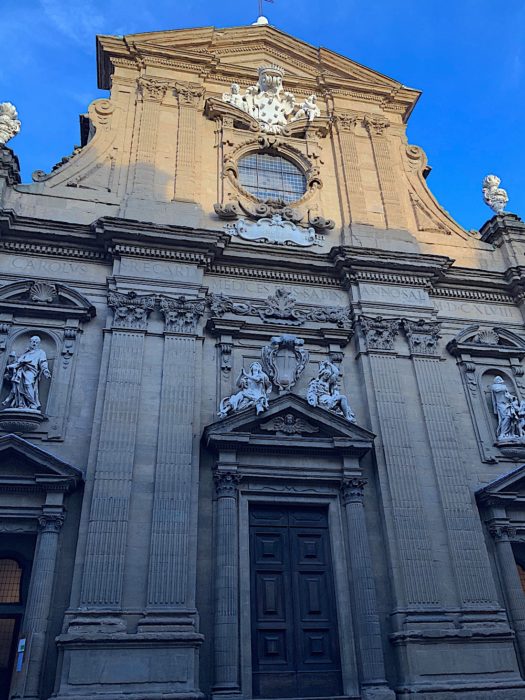
Age
XVII-XVIII centuries
Designers
Matteo Nigetti, Gherardo and Pierfrancesco Silvani
The Chiesa di San Michele e San Gaetano is located in Piazza Antinori; it represents one of the most important baroque constructions in Firenze. It was built up on the site of a church (San Michele Bertelde) dating back to the XI century and dedicated to the Archangel Michael. It was a modest single-nave structure, completely destroyed in 1640, when the nave of the new church was already completed. The construction of the new building was entrusted to the Order of the Teatini, devoted to their founder, San Gaetano di Thiene. The Order, in 1604, commissioned the baroque project to the architect Matteo Nigetti, followed, in 1633, by the architect Gherardo Silvani, assisted by his son Pierfrancesco. The façade was built by Gherardo Silvani between 1648 and 1693 and it was built in a new style compared to the patterns of Florentine religious architecture, in fact it reflects a typically Roman style. It was designed on two orders divided by a protruding cornice; in the lower part there are three portals with triangular tympanums above which the statues of San Gaetano di Thiene and Sant’Andrea Avellino were installed. The central portal is decorated by the coat of arms of the Theatines close to the statues of Hope and Poverty. The upper part has a large rose window, surmounted by the Medici family coat of arms, supported by two marble cherubs. At the top the large tympanum provides the shape of a hut, while on the sides there are pedestals of two urns. The work finally ended in 1701 with the scenographic expansion of the stairway on Piazza Antinori.
The façade is entirely in Pietraforte Sandstone. The statues, the coats of arms, the decorations, the urns on the façade are in Apuan Marble. The steps is in Pietra Serena Sandstone.

